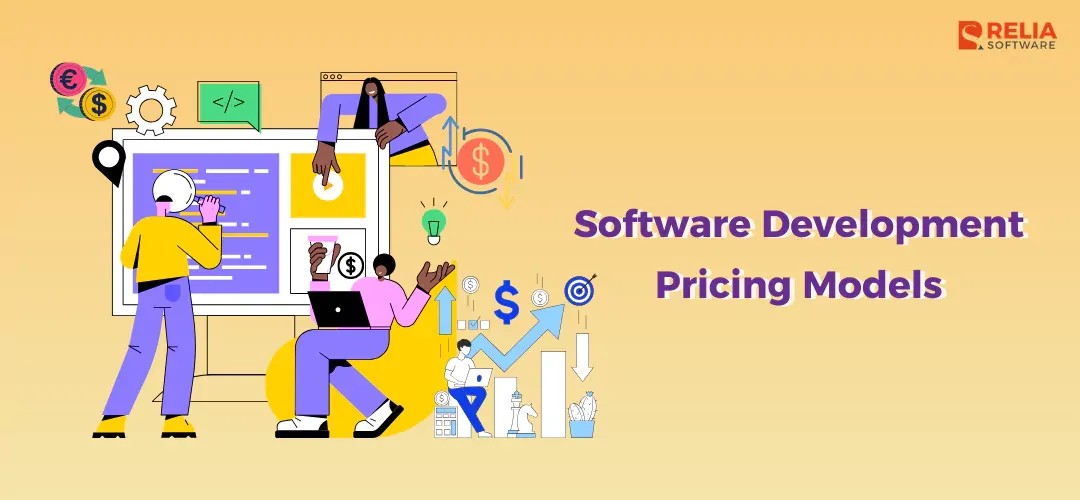Choosing the appropriate pricing model for your software development project is an important decision that can have a considerable impact on the project's success, budget, and timetable.
This article will analyze the software development pricing models available, giving you a thorough of their benefits, drawbacks, and best use cases. By the end of this essay, you'll have the knowledge to choose the price model that best meets your project's specific needs and goals.
>> Read more: What are Software Development Standards and Best Practices?
Why Should You Need A Pricing Model For Your Projects?
Software development pricing models are more than just cost estimates; they provide a clear structure for calculating development expenses in software development. These models will offer a foundation for good project planning, communication, risk management, and, ultimately, a successful and cost-effective software development process.
In detail, this allows you to:
- Budget Effectively: Knowing the projected costs ahead allows you to deploy your resources more efficiently and avoid financial shocks.
- Set Expectations: You and the development team will clearly understand deliverables, timetables, and associated expenses. This reduces misunderstandings and keeps everyone on the same page.
- Identify Risks: The pricing model can indicate potential risks caused by changes or unexpected complexities. This enables proactive planning and mitigation methods to prevent cost overruns and project delays.
- Define Milestones: The methodology promotes regular communication and progress tracking by specifying critical project milestones and their associated expenses.
- Develop Trust & Long-term Partnerships: A straightforward and fair pricing approach builds confidence between you and your development partner. This is especially relevant in ongoing initiatives or when future cooperation is planned.
4 Software Development Pricing Models For Business
Fixed Price Model
A fixed price model is a pricing strategy in which the total cost of the project is determined and agreed beforehand, including the time and resources for execution. This implies that the customer is obligated to pay a fixed sum for the entire project, regardless of any cost variations during execution.
Benefits:
- Predictable Costs: Knowing the exact cost of the project upfront eliminates budget shocks and simplifies financial planning.
- Improved Project Management: The development team will be motivated to complete tasks on time and within budget when they know the expected budget ahead.
- Clear Expectations: Agreed deliverables and prices promote clear communication and reduce misunderstandings.
- Faster Project Completion: The fixed-price structure pushes the development team to focus on essential functionalities to meet deadlines.
Challenges:
- Scope Creep: Changes to project requirements after the price agreement might increase costs and cause conflict. However, this can be mitigated with a clear requirements document and a robust change management strategy.
- Limited Flexibility: The fixed price model leaves little room for adjustment once the project begins. New features or complicated functionalities may not be accommodated within the agreed-upon price.
- Inaccurate Estimates: Estimating costs can be challenging, particularly for complicated projects. Underestimating the project scope can result in losses for the development team.
When to Use the Fixed Price Model?
- Well-specified Projects: Ideal for projects with well-defined scopes, features, and functionalities that are unlikely to change.
- Simple Functionality: Suitable for projects using well-known technologies and development techniques.
- Tight Deadlines: A predetermined price encourages the development team to meet specific deadlines to ensure project quality.
- Budget Constraints: Knowing the project cost upfront provides better budget allocation and prevents financial shocks.
The fixed-price model offers peace of mind for budgeting software development. However, proper planning and effective communication are critical to avoid scope creep and ensure project success. Consider this model if your project has a clear scope, simple functionalities, and tight timeframes.
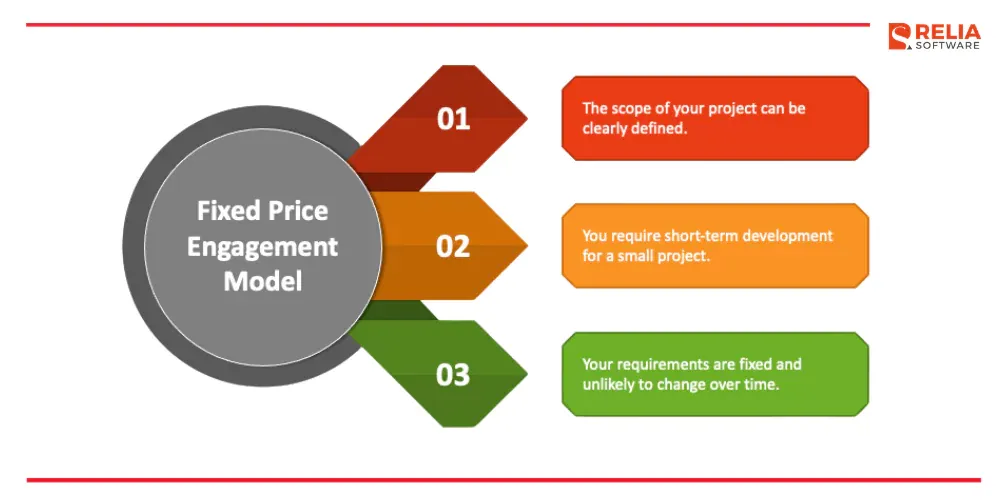
Time and Material Pricing Model (T&M)
A Time and Material (T&M) pricing model bills the client based on the actual time developers spend on the project and the expenses incurred for materials. Essentially, developers are paid an hourly fee, sometimes with additional charges.
Benefits:
- Adaptability: The Time and Material (T&M) pricing contract easily adapts to changes in project scope or features as they arise during development.
- Transparency: Clients are charged based on the actual time spent by developers and the resources used, ensuring clear and transparent billing.
- Closer Collaboration: Continual communication required for T&M billing fosters more collaboration between the client and the development team.
- Ideal for Uncertain Projects: T&M facilitates project changes for uncertain requirements or new technologies.
Challenges:
- Budget Uncertainty: Predicting the final cost can be hard for clients with tight budgets because it depends on the overall development duration.
- Potential for Scope Creep: T&M's flexibility might lead to project creep if not well managed. Clear communication and specified milestones are critical.
- Client Involvement: Clients must actively monitor progress and modify priorities to control expenses.
When to Use the Time and Material Model?
- Evolving Requirements: Ideal for projects whose scope and features are expected to evolve as development advances.
- Uncertain Projects: T&M's flexibility benefits projects that use new technology or have ambiguous requirements.
- Long-Term Projects: T&M enables modifications based on continuing feedback and evolving market demands.
- Collaborative Partnerships: Best for scenarios where close collaboration and client participation are desired throughout the development process.
The T&M approach allows for greater flexibility in dynamic projects but requires active client participation to manage costs effectively. Consider T&M if your project has changing requirements, involves unproven technology, or is a long-term engagement that requires close collaboration.
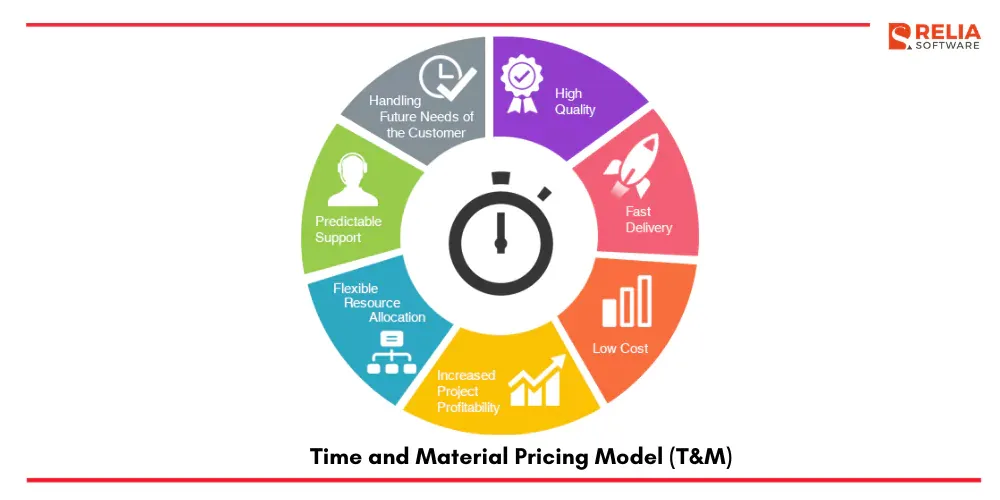
Mixed Pricing Model
A mixed pricing model is a combined strategy that integrates aspects of both fixed price and time and material (T&M) models. This pricing model provides a balanced combination of cost predictability and adaptability.
Benefits:
- Balanced Cost Control: Fundamental functionalities are covered under a fixed price, ensuring budget certainty for critical features.
- Flexibility for Change: Additional features or scope changes can be billed on a time and materials basis, allowing for alterations without stopping the entire project.
- Phased Development: The project can be divided into phases, each with set expenses for key functionalities and time and materials for new additions.
- Reduced Risk: The fixed pricing component reduces the risk of going over budget for critical functionalities.
Challenges:
- Complexity: Managing both fixed and T&M components necessitates a clear understanding of deliverables and how adjustments will be made.
- Potential for Disputes: There may be disagreements about the "core functionalities" definition in the fixed model and the pricing of extra features under the T&M model.
- Accurate Estimates: To avoid cost overruns, both fixed and T&M components must be estimated precisely beforehand.
When to Use the Mixed Pricing Model?
- Phased Development: For projects that are divided into discrete phases with specific deliverables for each.
- Risk-Averse Clients: Clients who want budget stability for core functions but flexibility for modifications.
- Ongoing Collaboration: Best for projects requiring constant collaboration to refine features and functions during development.
The mixed pricing approach provides a mixture of predictability and flexibility. Consider this strategy when your project's basic functionality is fixed, but you want to make changes to new features and maintain ongoing collaboration.

Dedicated Team Pricing Model
The dedicated team pricing model involves establishing a dedicated development team within the service provider's organization. You pay a monthly fee for the team's services, which gives you significant control over the project. While it offers flexibility and expertise, it often comes at a higher cost than other models.
Benefits:
- High Focus and Control: Dedicated staff are committed solely to your project, resulting in enhanced focus, better alignment with project objectives, efficient development, and quicker problem-solving.
- Scalability and Flexibility: You can easily increase or decrease the team size as project requirements change, providing more flexibility than fixed-cost solutions.
- Stronger Collaboration: The dedicated team encourages close collaboration and communication between your team and the developers, resulting in a more productive partnership.
Challenges:
- Higher costs: This model can be more expensive compared to other pricing models.
- Long-term commitment: Requires a longer-term contract, which may not be suitable for short-term projects.
- Management overhead: Needs to invest more time in project management resources to oversee the dedicated team.
When to Use the Dedicated Team Model?
- Large-Scale Projects: This pricing strategy is ideal for big, ongoing projects that require extensive development time.
- Custom Software Development: Projects requiring extensive customization and continuous maintenance.
- CI/CD Development: Using a CI/CD approach requires a dedicated team to provide efficient development cycles and faster feature releases.
- Deep Experience: When your project demands specialized skills or domain knowledge, a dedicated team may provide an in-depth understanding of your specific requirements.
The dedicated team approach provides a high level of concentration, management, and adaptability for complicated tasks. Nevertheless, it necessitates a more substantial financial allocation and a longer-term dedication. This strategy is designed for large-scale, unique software development projects that require constant collaboration and deep knowledge.
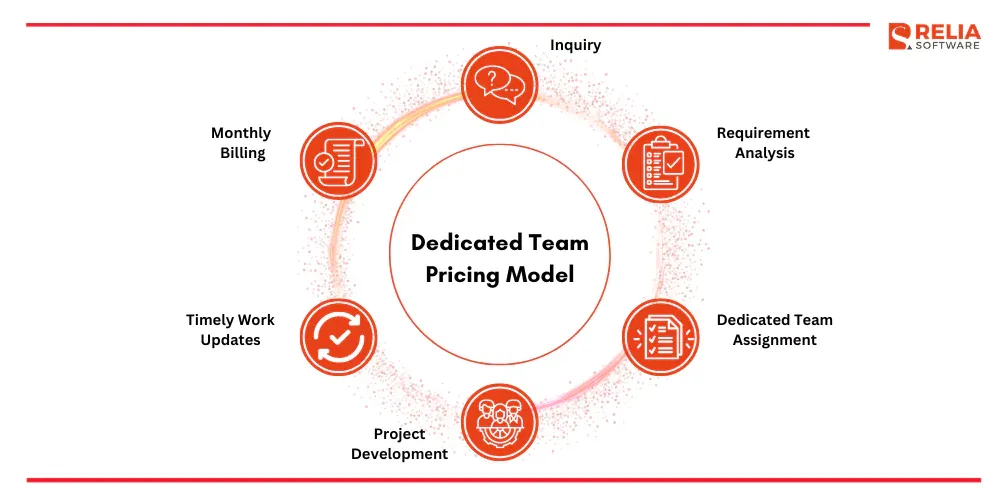
For a better understanding of the distinction between these software development pricing models, here is a table of comparisons for you to preview.
|
Features |
Fixed Price Model |
T&M Model |
Mixed Model |
Dedicated Team Model |
|
Cost Certainty |
Fixed cost agreed upfront |
Depends on development time |
Fixed cost for core functionalities T&M for additional features |
Client pays for developer time |
|
Flexibility |
Limited room for changes after the scope is set |
Easily adapts to changing requirements |
Flexibility for additional features under T&M |
Team can scale up or down based on needs |
|
Project Suitability |
Well-defined projects with clear scope |
Projects with evolving requirements or uncertain functionalities |
Partially defined projects with core functionalities set |
Complex, ongoing projects requiring a long-term development effort |
|
Client Control |
Clear deliverables defined upfront |
Client involvement needed for scope control |
Control over core functionalities |
Direct control over the development team |
|
Development Team Incentive |
High incentive to meet deadlines and stay within budget |
A lower incentive to optimize development time |
Moderate incentive |
High incentive to deliver efficient development |
|
Communication |
Less communication needed after initial agreement |
Ongoing communication crucial for project management |
Moderate communication |
Frequent communication for close collaboration |
|
Budget Risk |
Low with predictable cost |
High - Cost can exceed estimates if project scope changes |
Risk of exceeding budget for additional features |
High - Client pays for all development time |
How To Choose The Right Pricing Model?
Project Complexity
The scope and complexity of your project directly influence the most suitable pricing model. Fixed-price or mixed models are advised for well-defined projects with a clear scope and restricted functionality. Meanwhile, time and material (T&M) or dedicated team models may be better for projects with changing needs, new technologies, or multiple functions.
Budget
Your financial resources significantly impact pricing model selection. If you have a fixed budget, a fixed pricing model or mixed model with a clearly defined budget for core functionalities might provide cost certainty.
On the other hand, if you have budget flexibility and expect adjustments or additional functionality, T&M or dedicated team models may be ideal. These models allow for project modifications and give you more cost control based on your development needs.
Timeline
A fixed-price model can encourage the development team to meet deadlines. An upfront cost and timeline can expedite development and ensure timely completion. Conversely, T&M or dedicated team models are excellent for flexible project timelines. These models can accommodate adjustments and additional features without delaying the project. They enable iterative development with feedback and modifications.
Risk Tolerance
Your comfort level with financial uncertainty influences your choice. A fixed price strategy reduces cost overruns for risk-averse individuals who desire predictable costs. T&M or dedicated team models may be ideal for those who value flexibility and can tolerate higher financial risk. As the project continues, these models can alter but may surpass initial cost projections if the scope changes dramatically. Assess your risk tolerance and choose a model that aligns with your comfort level.
Control Desired
The degree of control you desire over the development process is another important factor. A dedicated team model provides the most direct supervision of the development process and team. This strategy gives you a dedicated team working on your project with clear communication and direct oversight.
If you prefer cost certainty and less control, a fixed price or mixed model may work better. Pre-defined scope and functions reduce the need for constant inspection in these models, allowing fewer adjustments once the project begins.
Project Scope
A fixed price model or a mixed model may be suitable for projects that have a well-defined and adequately documented scope of functionalities. With a clear scope, upfront costs may be predicted and development can follow a framework.
T&M or dedicated team models are suitable for projects with changing scope and functionality. These models allow for adjustments without affecting the project budget or timeframe.
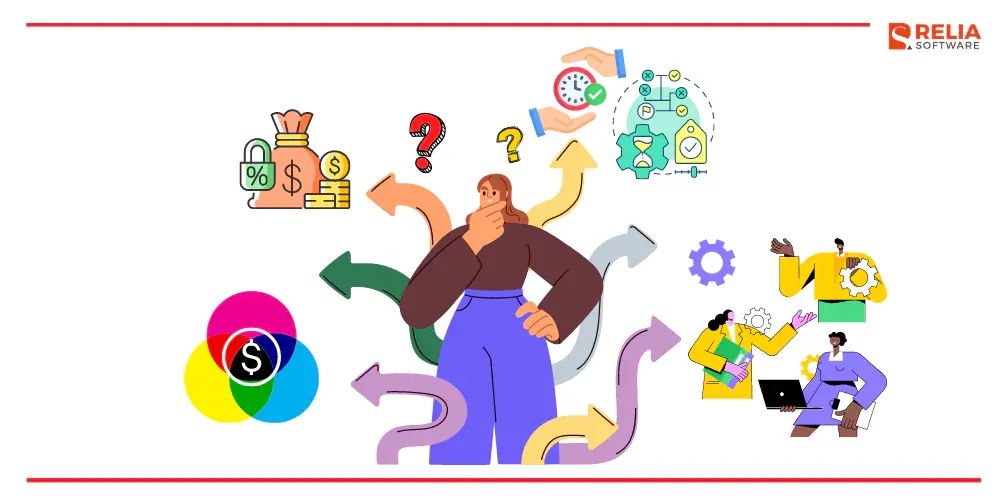
>> Read more:
- Detailed Breakdown For App Development Cost
- Offshore Software Development Rates by Country
- How Much Does It Cost to Design an App?
- How To Reduce Software Development Costs?
- 8 Popular Types of Engagement Models in Software Development
Conclusion
To make smart choices about your project, you need to understand the details of how software development prices work. You can choose the pricing model that works best for you by carefully considering the size and scope of your project, your budget, the time frame you need, and the amount of control you want.
Remember to think about the pros and cons of each type before making a choice. You can enhance the budget, timeline, and overall success of your project by picking the right pricing model.
>>> Follow and Contact Relia Software for more information!
- development
